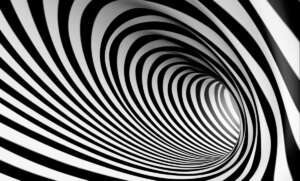WHAT IS VERTIGO?

Vertigo, one of the most common complaints in neurology clinics, is often expressed as a symptom that does not have any significant underlying disease and that resolves spontaneously. In fact, the cause of vertigo in these patients is related to the inner ear. So 80% of vertigo is related to the inner ear balance system and 20% is related to neurological, cardiological, psychiatric causes. Most patient groups are lingering in unrelated areas. However, it should be remembered that sometimes it can also point to a very serious neurological disease.
There are some mechanisms that keep our bodies aware of their position in the space and provide balance. The brain, the inner balance of the inner ear, the constant head with warnings from the muscles and joints, and the other parts of the body in relation to each other and in space. When these mechanisms are impaired, balance disorder or dizziness occurs.

Vertigo is a common complaint. However, patients can express very different things as vertigo. Vertigo is a picture that develops when a patient thinks that they are really turning around their own body or circumference. The vertigo that occurs without a sense of rotation in this way is defined as a pseudo-vertigo (dizziness).
Vertigo: Any dizziness problem can be understood if the patient’s balance is stabilized. This can change from violent to impossible to open a patient to a bed, and sometimes only to a slippery feeling. It may even just appear as a blur. The medical language is commonly called vertigo.
How to Provide Equilibrium: Achieving equilibrium is a very complicated and too much organ role that is still not fully solved. Organs and systems that play a role in this are the brain, spinal cord, inner ear (labyrinth), eyes, joints and muscles. Any disease that affects these organs may cause dizziness and other manifestations of that organ. The vertigo, which is a symptom of the role of so many organs, can not be assessed naturally only by a branch specialist. Often it is necessary to examine the ENT and Neurology physicians at first, and also to examine the eye, internal medicine or physical therapy branches.

What Happens Like Complaints: Vertigo is explained differently by each patient. Everything turns, the ground slides under my feet, I slip to the side, my head empties, my eyes are getting dark, and I hear it often. All of them are suddenly called vertigo. There are other symptoms in patients with vertigo, depending on what the cause is. Vertigo, hearing loss, sensation of pressure in the ear, nausea-vomiting, ear discharge and abnormal movements in the eyes (nystagmus) can be detected in the vertigo of ear diseases. In vertigo due to neurological diseases, there may be headaches, numbness, paralysis, abnormalities in eye movements. Other complaints that may be found with dizziness may be very variable. However, many patients have only vertigo.
What Causes Can Be: As mentioned above, vertigo can be due to many organs. However, it is more likely to be mentioned here about vertigo. Any disease in the inner ear can cause vertigo with other ear complaints. But it can only occur in the vertigo. Among the vertigo ear diseases include:
-Inner ear involvement after upper respiratory tract infections.
-Benign Positional Paroxysmal Vertigo (abbreviated as BPPV and disruption of the physiology of some similar substances that provide balance in the inner ear)
-Meniere’s Disease (Changing the chemical conditions of the inner ear lids to increase the pressure)
-Vestibular neurinitis (Inflammation of the nerve that transmits signals related to balance in the inner ear to the brain)
– Spread of chronic otitis media in the inner ear (labyrinth)
-Inenitisation of meningitis or other febrile illnesses
– Tumoral diseases in inner ear or inner ear nerve
More detailed information on the above mentioned inner ear diseases will be given in their respective sections.

What to see on the test: If the vertigo is due to a disease in the inner ear, there is usually no problem in the ear examination. Inflammation in the eardrum and middle ear is seen in the eardrum only if otitis media is affected by middle ear infections. Abnormal eye movements may be detected in the patient. The direction of these eye movements can give some information about which ear is sick. As vertigo is not a visible problem, as much information as possible should be obtained. For this purpose, your doctor will undergo some tests while lying down or even walking.
What Inspections Will Be Made: What tests will be done for vertigo depends on the information obtained at the end of the examination. If it is determined that there is no ear related disease at the end of the examination, your doctor will refer you to other departments. However, some investigations are usually done after the examination if they decide to do so. Among these tests, the most commonly used odiometry is applied, which gives us information about both hearing and inner ear functions. In addition, ear-related normal films, computed tomography or magnetic resonance (MR) examination can be performed. Some blood tests can also be added to these tests. However, even in many ear diseases, even with odiometry, computerized tomography or MR, nothing is seen. Such tests are usually used to exclude more serious problems such as tumors.

How to Treat: Since vertigo itself is not a disease but a symptom of another disease, it is necessary to treat the underlying cause first. However, there are no clear reasons for the many head trauma patients. For this reason, the main purpose is to turn away from vertigo. Vertigo due to ear diseases (except tumors) usually occurs spontaneously short or long. Because the other ear compensates the problem of the patient’s ear over time. This can sometimes be as long as 6 months or 1 year.
If vertigo is a positional vertigo (BPPV), it is treated with some movement called Epley maneuver which your doctor will apply to you on examination. These movements allow some particles in the inner ear to fit. For other reasons it is necessary to use medication. When different medications are used for this purpose, almost all of them reduce certain vertigo. Patients with severe vertigo may need to be stuck in the patient’s bed. Tumor-related vertigo is the treatment of tumor removal. Meniere’s disease, which does not respond to medication, is sometimes performed.
What to Watch Out for: There are some movements that patients with vertigo can do at home to reduce this situation. These will either be described to you by your doctor or you will be informed with leaflets to be given.
.
BAŞ DÖNMESİ (VERTİGO) NEDİR?

Nöroloji kliniklerinde sık karşılaşılan şikâyetlerden birini oluşt
uran baş dönmesi (vertigo), çoğu zaman altında önemli bir hastalık bulunmayan ve kendiliğinden düzelen bir belirti olarak ifade ediliyor. Aslında bu hastalarda baş dönmesinin nedeni kulak ile ilgilidir. Yani baş dönmesininin %80’i iç kulak denge sistemi ile, %20’si de nörolojik, kardiyolojik, psikiyatrik nedenler ile ilgilidir. Çoğu hasta grubu ilgili olmayan bölümlerde oyalanmaktadır. Ancak bazen çok ciddi nörolojik bir hastalığa da işaret edebileceği unutulmamalıdır.
Vücudumuzun mekândaki pozisyonundan haberdar olmayı ve dengemizi sağlayan bazı mekanizmalar var. Göz, iç kulaktaki denge organı, kas ve eklemlerden kalkan uyarılarla sürekli baş ve vücudun diğer kısımlarının birbiriyle ve mekândaki yerleri hakkında beyne bilgi geliyor. Bu mekanizmalarda bozukluk olunca denge bozukluğu veya baş dönmesi ortaya çıkıyor.

Baş dönmesi sık karşılaşılan bir şikâyettir. Ancak hastalar çok farklı şeyleri baş dönmesi olarak ifade edebiliyor. Vertigo, hastanın kendi bedeni veya çevrenin etrafında gerçekten dönmekte olduğunu zannetmesiyle gelişen bir tablo. Bu şekilde bir dönme hissi olmadan ortaya çıkan vertigo ise yalancı vertigo (dizzness) olarak tanımlanıyor.
Baş Dönmesi : Baş dönmesi diyince hastanın dengesini sağlamadaki her türlü problem anlaşılır. Bu durum hastayı yatağa düşürüp gözlerini dahi açamayacağı şiddetten, sadece zaman zaman bir kayma hissine kadar değişebilir. Hatta sadece bir göz kararması şeklinde ortaya çıkabilir. Tıp dilinde genel olarak vertigo adı verilir.
Denge Nasıl Sağlanır:Dengenin sağlanması hala tam olarak çözülememiş çok karmaşık ve çok fazla organın rol oynadığı bir durumdur. Bu konuda rol oynayan organ ve sistemler arasında beyin, omurilik, iç kulak (labirent), gözler, eklem ve kaslar sayılabilir. Bu organları etkileyen herhangi bir hastalık baş dönmesi ile birlikte o organa ait diğer belirtilerin ortaya çıkmasına neden olabilir. Bu kadar çok organın rol oynadığı bir belirti olan baş dönmesi doğal olarak sadece bir branş uzmanı tarafından değerlendirilemez. Genellikle başlangıçta KBB ve Nöroloji doktorları muayene etsede göz, dahiliye veya fizik tedavi branşlarında da muayene olmak gerekebilir.

Ne Gibi Şikayetler Hissedilir: Baş dönmesi her hasta tarafından farklı anlatılır. Her taraf dönüyor, yer ayağımın altından kayıyor, bir yana doğru kayıyorum, kafamın içi boşalıyor, gözlerim kararıyor şeklinde açıklamalar sık duyulur. Bunkarın hepsine birden baş dönmesi denir. Baş dönmesi olan hastalarda, sebebin ne olduğuna göre başka belirtilerde olur. Kulak hastalıklarına bağlı baş dönmelerinde bereberinde kulak çınlaması, işitme azlığı, kulakta basınç hissi, bulantı-kusma, kulak akıntısı ve gözlerde anormal hareketler ( nistagmus ) saptanabilir. Nörolojik hastalıklara bağlı baş dönmelerinde ise baş ağrısı, uyuşmalar, felçler, göz hareketlerinde anormallikler olabilir. Baş dönmesi ile bulunabilecek diğer şikayetler çok değişken olabilir. Ancak birçok hastada da sadece baş dönmesi mevcuttur.
Sebepleri Ne Olabilir: Yukarıda anlatıldığı gibi baş dönmesi birçok organa bağlı olabilir. Ancak burada daha çok iç kulaktaki baş dönmesi yapan hastalıklardan bahsedilecektir. İç kulaktaki herhangi bir hastalık diğer kulak şikayetleri ile beraber baş dönmesi yapabilir. Ancak sadece baş dönmeside oluşabilir. Baş dönmesi yapan kulak hastalıkları arasında şunlar sayılabilir:
–ÜSYE (üst solunum yolu infeksiyonları) sonrası iç kulak tutulumu
-Pozisyona bağlı baş dönmesi (BPPV olarak kısaltılır ve iç kulakta dengemizi sağlayan toza benzer bazı maddelerin fizyolojisinin bozulması)
–Meniere Hastalığı (İç kulaktaki sıvıların kimyasal durumlarının değişerek basınç artışı yapması)
–Vestibüler Nörinit (İç kulaktaki denge ile ilgili sinyalleri beyine ulaştıran sinirin iltihaplanması)
-Kronik orta kulak iltihaplarının iç kulağa yayılması (labirentit)
-Menenjit veya diğer ateşli hastalıkların iç kulağı etkilemesi
–İç kulakta veya iç kulak sinirindeki tümöral hastalıklar
Yukarıda belirtilen iç kulak hastalıkları hakkında kendi bölümlerinde daha ayrıntılı bilgi verilecektir.

Muayenede Ne Görülür: Baş dönmesi eğer iç kulaktaki bir hastalığa bağlı ise genellikle kulak muayenesinde bir problem görülmez. Sadece orta kulak iltihaplarının iç kulağı etkilemesine bağlı baş dönmesi varsa kulak zarında delik ve orta kulakta iltihaplanma görülür. Hastada anormal göz hareketleri saptanabilir. Bu göz hareketlerinin yönü hangi kulağın hasta olduğuna dair bazı bilgiler verebilir. Baş dönmesi gözle görülen bir problem olmadığı için mümkün olduğunca çok bilgi edinilmelidir. Bu amaçla doktorunuz ayakta yada yatarken hatta yürürken bazı testlere tabi tutacaktır.
Ne Gibi Tetkikler Yapılır: Baş dönmesi için ne gibi tetkiklerin yapılacağı muayene sonunda elde edilen bilgilere göre yapılır. Eğer muayene sonucunda kulakla ilgili bir hastalık olmadığı kararına varılırsa doktorunuz sizi diğer branşlara sevkedecektir. Ancak buna karar verirken muayene sonrası bazı tetkikler genellikle yapılır. Bu tetkikler arasında en sık başvurulan odiometri adı verilen ve hem işitme hemde iç kulak fonksiyonları hakkında bize bilgi veren test uygulanır. Ayrıca yine kulakla ilgili normal filmler, bilgisayarlı tomografi veya manyetik resonans (MR) tetkiki yapılabilir. Bu testlere bazı kan tahlilleri de eklenebilir. Ancak birçok kulak hastalığında dahi odiometri, bilgisayarlı tomografi ya da MR’ ile bile birşey görülmemektedir. Bu gibi testler genellikle tümör gibi daha ciddi problemleri ekarte etmek için uygulanır.

Nasıl Tedavi Edilir: Baş dönmesi kendisi bir hastalık olmayıp başka hastalığın belirtisi olduğu için öncelikle asıl sebebin tedavisi gerekir. Ancak birçok başdönmesi hastasında ortaya net bir sebep konamamaktadır. Bu nedenle asıl amaç baş dönmesini ortadan kaldırmak haline dönmektedir. Kulak hastalıklarına bağlı baş dönmeleri (tümörler hariç) genellikle kısa ya da uzun zamanda kendiliğinden ortadan kalkmaktadır. Çünkü diğer kulak zaman içinde hasta kulağın problemini kompanse etmektedir. Bu bazen 6 ay ya da 1 yıla kadar uzayabilir.
Baş dönmesi eğer pozisyonel baş dönmesi (BPPV) ise bunun tedavis Epley manevrası denen ve doktorunuzun size muayene masasında uygulayacağı bazı hareketlerle
olmaktadır. Bu hareketler iç kulaktaki bazı partiküllerin yerine oturmasını sağlamaktadır. Diğer sebeplerde ilaç tedavisi kullanmak gerekir. Bu amaçla değişik ilaçlar kullanılsada hemem hemen hepsi belli oranda baş dönmesini azaltırlar. Baş dönmesi şiddetli olan hastalar bazen serum takılıp hastaneye yatırmak gerekebilir. Tümörlere bağlı baş dönmelerinin tedavisi tümörün çıkarılmasıdır yani ameliyattır. İlaç tedavisine cevap vermeyen Meniere hastalığı’ nda da bazen ameliyat yapılır.
Nelere Dikkat Etmeliyim: Baş dönmesi olan hastaların, bu durumu azaltmak için evde uygulayabileceği bazı hareketler vardır. Bunları ya doktorunuz size tarif edecektir ya da verilecek broşürlerle size bilgi verilecektir.
.



